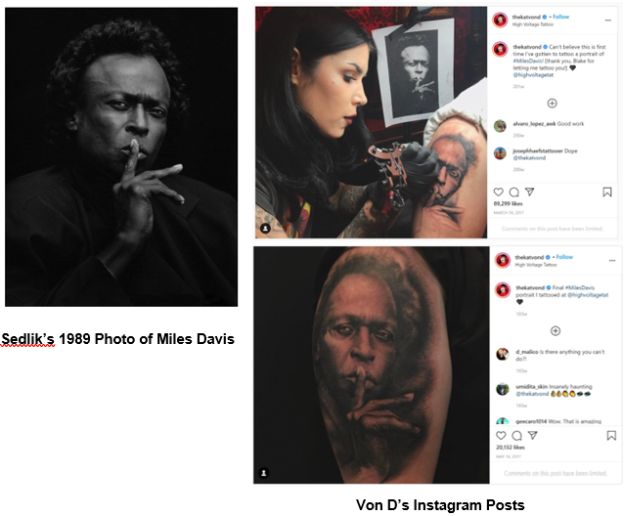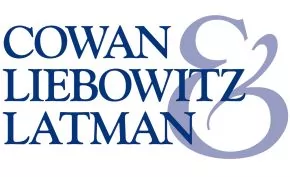On January 26, 2024, a unanimous jury held that a tattoo of Miles Davis inked by celebrity artist Katherine Von Drachenberg (better known as Kat Von D) was not substantially similar to the reference photo on which it was based. The jury also found that the Instagram posts showing the photo in the background were protected under the fair use doctrine.

Kat Von D used Jeffrey B. Sedlik's 1989 photo of iconic jazz musician Miles Davis as a reference for a tattoo she inked on the arm of non-party Blake Farmer. Von D made social media posts of the process, one of which showed the in-progress tattoo with Sedlik's photo in the background and another of which showed the completed tattoo.
Sedlik sued Von D, claiming that both the tattoo and the social media posts infringed his copyright in the 1989 photo, and sought a total of $150,000 in statutory damages. Von D countered that the use of the 1989 photo as a reference was fair because it is not the custom and practice in the tattoo industry to seek licenses for such uses, and because the use was transformative, with the tattoo being part of the 'visible inventory' of Farmer's life rather than a depiction of Davis.
The jury did not reach the question of whether Von D's use of the 1989 photo was fair because—despite the fact that the tattoo was nearly visually identical to the reference photo—the jury held that the works were not substantially similar. As such, Von D did not need to rely on a fair use defense.
The jury went on to find that Von D's display of the 1989 photo in social media posts constituted a non-infringing fair use.
Whatever the basis for the jury's decision, it is certainly a victory for tattoo artists, who can continue the ages-old practice of using reference photos when inking clients.
The case is Sedlik v. Von Drachenberg, C.D. Cal. Case No. 2:21-cv-1102.
The content of this article is intended to provide a general guide to the subject matter. Specialist advice should be sought about your specific circumstances.

